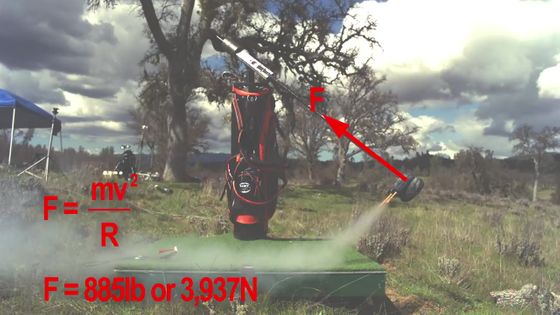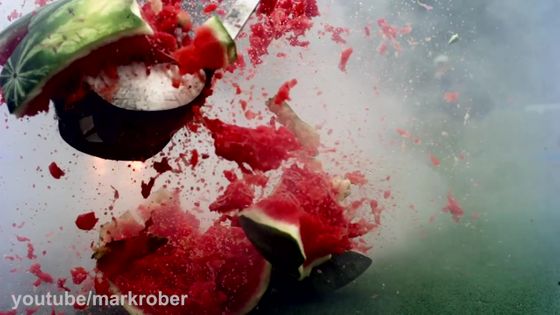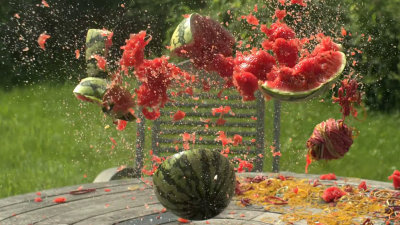Former NASA engineers test what happens if the golf club swings full with rocket power

Former NASA engineer YouTuber
ROCKET POWERED Golf Club at 100,000 FPS-YouTube
The man standing in the center is Mark Rover, and a device like a golf club attached to a golf bag by Mr. Rover is a rocket-mounted golf club. The production process is not originally disclosed in Mr. Robber's movie, but this time it is related to '6 lessons', and it will be shown plenty of production secret stories and experimental results this time.

It looks like this when looking at the tip of the golf club from the front. You can see that the two pipes are firmly glued to the club head.

You can see the rocket propellant spout sticking out behind.

While the average of professional golfers' swing is 110 miles per hour (about 177 kilometers per hour).

The rocket-mounted golf club rotates at 150 miles per hour (about 242 km per hour) and swings.

Let's look at the state of development right away. The first began with creating a simple prototype.

There is a weight on the other side of the club head.

This is a counter weight to make the center of gravity of rotation overlap the rotation axis.

Without this, the balance gets worse as the rotation increases, and vibrations occur like a rattled drum type clothes dryer.

If so, it will not be possible to hit the club head on the golf ball.

Thanks to the counterweight I was able to rotate the test well. That this discovery was 'first learning'.

Then we will design using

After processing the metal according to the design and making parts ...

I will assemble.

Bond the rocket part with epoxy resin ...

Once you're on the net for safety, you're done with the first test model.

However, when the test was actually performed, the rocket was easily removed because the adhesion area of the epoxy resin was too small. This failure is 'second learning'.

Therefore, 3D scan the club head ...

Create a rocket shaped to fit the club head with a 3D printer.

At the same time, double-packed rockets.

However, this time a situation occurs where the golf club can not stand and it is twisted and broken. This failure leads to the 'third learning'.

I found that the golf club was soft and flexible, so I reinforced it with aluminum.

The “fourth learning” is the realization of the challenge that the golf ball must be placed gently on the tip of a golf club that rotates 10 revolutions per second.

Therefore, the optical sensor detects the rotation of the golf club ...

I installed a device to push up the golf tee from below at an optimal timing.

That's it, ignited.

As the first shot looked like they did well, everyone is delighted to see the slow motion camera. Then ...

It was found that the tee made of a soft material was not used and the ball bonded to the tee did not hit the golf head well.

The flight distance is various results.

This failure is the 'fifth learning'. It doesn't work well if the tee is soft, but if it is hard, the equipment will break this time.

The solution is simple. Do not pull too much on the tip of the tea with a string.

Arrowheads that seem to have solved all the problems hit the wall that is the 'sixth learning'. When I tried using two rockets, which had been only one, so far, I was able to find the golf club from the equipment.

Therefore, the result of recalculating the torque again ...

It turns out that the solution can be solved by increasing the two fixing devices to three. I will increase the fixings at once.

Finally, let's release the two rockets at maximum speed. 'I'm going to re-challenge this crazy double rocket,' he said.

You may be faced with a

While the friend who helped me is in danger ...

Finally the shot succeeded. The ball drew a beautiful trajectory and flew far away.

Robber sharing joy with his friends.

Looking at the slow motion camera, we could see the golf ball flying straight. After all, it is unclear where the golf ball went.

After tasting the taste, Mr. Rober tried to hit the ball himself at Rocket Club.

Try breaking a glass plate with a ball

I tried to smash the watermelon and play.

In addition, it was said that 'the broken watermelon was deliciously received by the staff.'

Related Posts:







